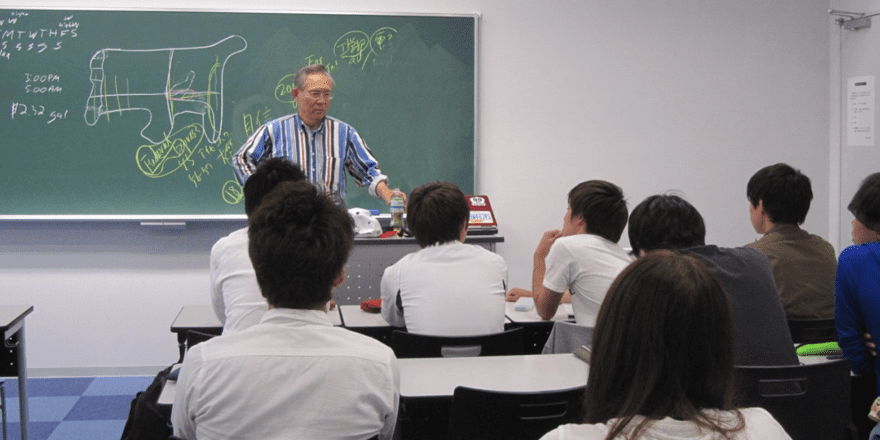
A gemba walk at a manufacturer of tablet inspecting machines
NOTES FROM THE GEMBA – Follow Catherine on another one of her gemba walks around French companies. This time, she visits a manufacturer of inspecting machines near Bordeaux, with a visionary leader and a great story.
Words: Catherine Chabiron, lean coach and member of Institut Lean France
This is a story about what we know and what we don’t know – and about how we can learn to see what we don't know. I heard it a few weeks ago, when Christophe Riboulet and I were standing in front of a large glass cabinet showcasing photos of coins and pills. I was visiting Proditec (of which Christophe is CEO), a manufacturer of automated inspecting machines based near Bordeaux.
Christophe [Planet Lean has a profile on him here] bought the company back from his family in 2005. In the three years after that, he managed to take it through a very important switch, from manufacturing for the money-coining business (talk about a niche: one customer per country – the mint) to making machines for the pharmaceutical industry – particularly for the production of tablets and capsules. Naturally, the Proditec team experienced a dramatic change in the process it carries out: they went from metal and dust to white rooms, and from working low-speed controls with a one-millimetre tolerance to one-tenth of a millimetre checks performed at a very high speed.
This meant the company had to design new machines with a high enough degree of sophistication that they could easily spot tiny defects on tablets: these must be isolated and rejected, because defective tablets can have a very negative impact on a person’s health (drugs are supposed to release slowly in the body, and a defect in a tablet’s coating may result in a much faster and larger release).
We moved away from the glass cabinet and entered the workshop. Christophe showed me the machines so that I could understand how they worked. Their functionalities included the distribution of tablets (from a pile to an orderly queue placed on a little conveyor belt for control), an optional rollover so that both sides of the tablet can be inspected, the visual inspection itself (by camera) and the ejection of faulty tablets.

Look at the machine in the picture and then think of a pill: the size of the equipment looks disproportionate to the size of the objects it inspects, but this is a result of the trade-off between speed and accuracy (too short or too slow a conveyor and the tablet won’t be flat enough on it to allow for repeatable camera checks). The skills set needed to design such machines spans mechanical engineering, software development (to monitor the machine), image processing, camera hardware, and electronic processing boards. It’s a complex endeavour.
As we observed the machine and the technicians working with it, Christophe told me a bit more about the progress Proditec has made, through trial-and-error. Looking for both growth and reduced costs, a deal was closed with a partner to launch production in India in 2010 (the country is a huge market for generic drugs). Unfortunately, this was shortly after the global economic crisis hit: competition started to put a lot of pressure on a tight market.
At that point, customer complaints and after-sales issues started to take their toll on Proditec. Christophe was trying everything from the traditional management handbook, from ISO specifications to hiring new managers, but nothing seemed to work. In 2011, a gemba walk with Michael Ballé (and a tough exchange on flow and quality) – part of a local management association event – told him there was a whole world he didn’t know, and convinced him to learn about it.
LEAN ARRIVES
Christophe chuckled when he told me that, at the time, they designed the machines, but outsourced the making of parts and the assembly to a single supplier who couldn’t do the job in less than four months – often producing defects that were difficult to detect before shipment to the customer. (A bit of investigation later revealed that the assembly for Proditec was carried out in the supplier’s spare time, and that the supplier was more a part maker than an assembler.)
When asked to implement PDCA to its own processes to fix the issues they were facing, the supplier did not respond positively, and within a week Christophe and his team decided to insource assembly. Pulled flow followed shortly after. Now one finished machine is kept in stock (as well as some work in progress – WIP – and standard parts), and another one is pulled as soon as the one before is sold. Lead-time has gone down from four months to five weeks, and the number of losses resulting from obsolete, unsold machines was also considerably reduced (when your finished good is a visual inspection machine, the cost of an unsold product – due to inaccurate production planning or sales forecast – can be very high).

Standing in the workshopwith Christophe, I could clearly see that one of the big advantages of insourcing production is that tests can be conducted regularly, ahead of delivery. This immediately gave Proditec a great opportunity to better understand the products they sold. Engineers now have direct feedback on the quality of their design from the in-house assembler. However, it was also obvious that, as sales started to pick up again, competition was doing better in a few instances, and that customer complaints were still a concern (even though they had gone down). Engineers claimed they needed more resources to keep up with it, but as Christophe puts it, “This would have been a sure way to do poor quality faster.”
The issue was an old-legacy system on which add-ons had been piled up on over time: no one dared modify the machine anymore, and young engineers would not be hired for fear they’d know nothing of the underlying (ageing) technology.
Another bold decision was then taken in 2011: dedicate two of the best engineers to the design of a complete new machine, using the latest technologies available. During our gemba walk, Christophe took me in front of a shelf and showed me what he remembers as an eye opener, the electronic processing board: this was another instance, he says, of “What I thought I knew for sure, turned out to be wrong, or obsolete”. The electronic card, based on DSP processing technology and considered the core of the value the machine provides (it is its operating system), was designed in house and showed off as an example of Proditec’s innovative spirit. However, investigating the market showed that a new open-source technology in the latest generation of smartphones was becoming widely available. It proved to be twice as cheap and powerful. In addition, open-source software offered connectivity to new distribution or vision modules, which could not have connected with the legacy system before. All in all, the new technology promised more modularity, robustness, and simplicity.
None of this happened by chance, as I realized when Christophe took me to see the beating (lean) heart of Proditec, the obeya room. Here, each machine is analysed and benchmarked against the competitors’ products and what was promised to the customer at the time of sale (there is no point in designing a product just because, one should do it to gain advantage over your competitors).

In the obeya, a takt-time of what will be improved, and when, is defined for each machine. Issues common to several machines are discussed at length. An illustration of this approach: one of Proditec competitors in Asia, a Japanese company, had an extremely stable machine that, however, required a dedicated seller’s expert to complete the set-up. The client was not allowed to do it on its own, or to make changes – the price to pay for a high level of stability. Proditec has now managed to provide the same stability the Japanese product offers, but it is also giving customers the ability to master the set-up in half a day (and the way to make changes once the machine is installed).
The turnover growth Proditec experienced is a clear demonstration that the lean engineering approach pays off (+30% in the pharmaceutical business in 2015, +15% in 2016) but Christophe is not content.
Right-first-time is still a long way away, he told me as we left the obeya. A recent incident involving the testing of a soon-to-be-delivered machine (a faulty capsule in a dusty batch was not ejected) started a new chain of thought.
Lean teaches you to stop the line when a problem arises, to think and investigate. It says that you shouldn’t deliver the faulty machine until you have understood the cause of the issue. Since the issue did not occur again in the second test, the client was tempted to let it go, but Christophe stood his ground – knowing too well this would mean he would have to deal with a bunch of angry engineers. This story clearly reminded me of the similar experience I have had with IT engineers every time I challenged them to find the cause of a breakdown – they were quite satisfied to move on to other tasks as soon as the bug disappeared when rebooting the system.
Proditec’s engineers argued they couldn't identify the defect because it couldn’t be reproduced in the second test. In response, Christophe told them about diagrams of cause and effect (he had just read Inagaki and Narusawa’s Essential Thinking for Product Development: Utilizing A3 Thinking and Lean Product Development in the fuzzy front end).

This turned out to be another opportunity to unveil an example of “I think I know, but I actually don’t”: as progress on the diagram was made, it became obvious that the specific ejection process for such near-the-limit working conditions had not been designed properly. The next “why” helped the team realize that both high-level and basic standards had not been clearly defined and agreed upon. Another similar cause-and-effect investigation revealed that engineers and assemblers usually performed tests on regular capsules, but not on dusty ones. This in turn confirmed the need to build a trade-off curve between distance (from distribution to camera) and stability, for each type of capsule.
The project room in which we were standing at that point is dedicated to understanding those trades of curve: cause and effect diagrams plastered the walls, all types of tablets available for discussion and simulations, and hard evidence of the deep thinking going into the product and how the customer will use it.
As I left Proditec, I reflected on how much its engineers and CEO are striving to refine their understanding of customer experience and of their own products, acquiring the key skills of lean design and problem solving. (The result of this is the fact that they are starting to see more clearly that they have much more to learn than they initially thought, although they have already come a long way.) We are light years away from traditional approaches like marketing customer panels or generic satisfaction surveys here; instead, Proditec goes deep into the details of the product, into seeing, running experiments and thinking ahead. Christophe and his team like a challenge, and I am sure they won’t stop searching for all the things they are yet to learn any time soon.
THE AUTHOR

Read more


INTERVIEW – In this Q&A with Catherine Chabiron, Toyota veteran Isao Yoshino discusses NUMMI, management at the company, and how to change the mindsets of leaders.


FEATURE – For this new monthly article, we will be asking five lean practitioners the same question and share their answers with you. We started by asking them about their biggest lean mistake.


FEATURE – In an excerpt from his new book, the author discusses the importance of building collaboration in your teams and explains why this is the only way to consistently deliver value.


FEATURE – A student in a medical school recently completed a rotation based on A3 thinking. She tells us what learning to use this problem-solving method has brought her.

